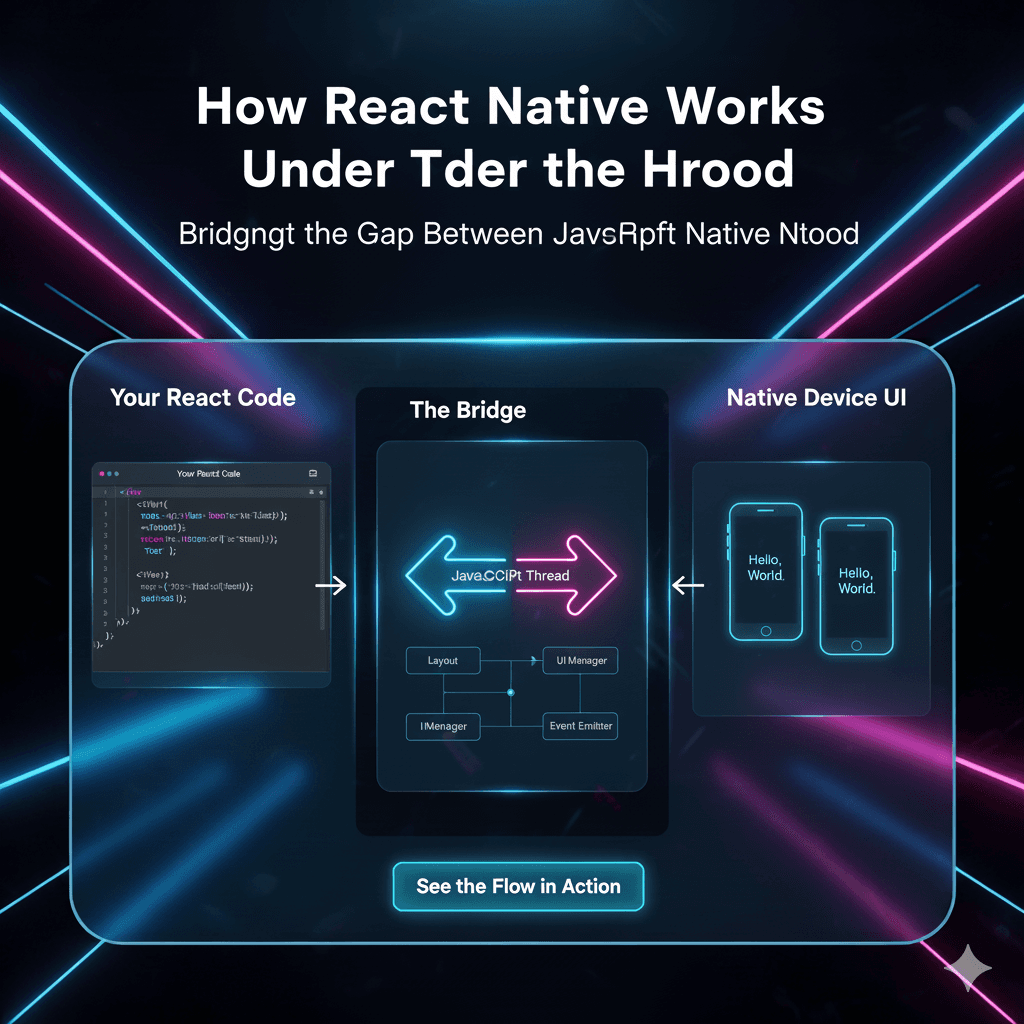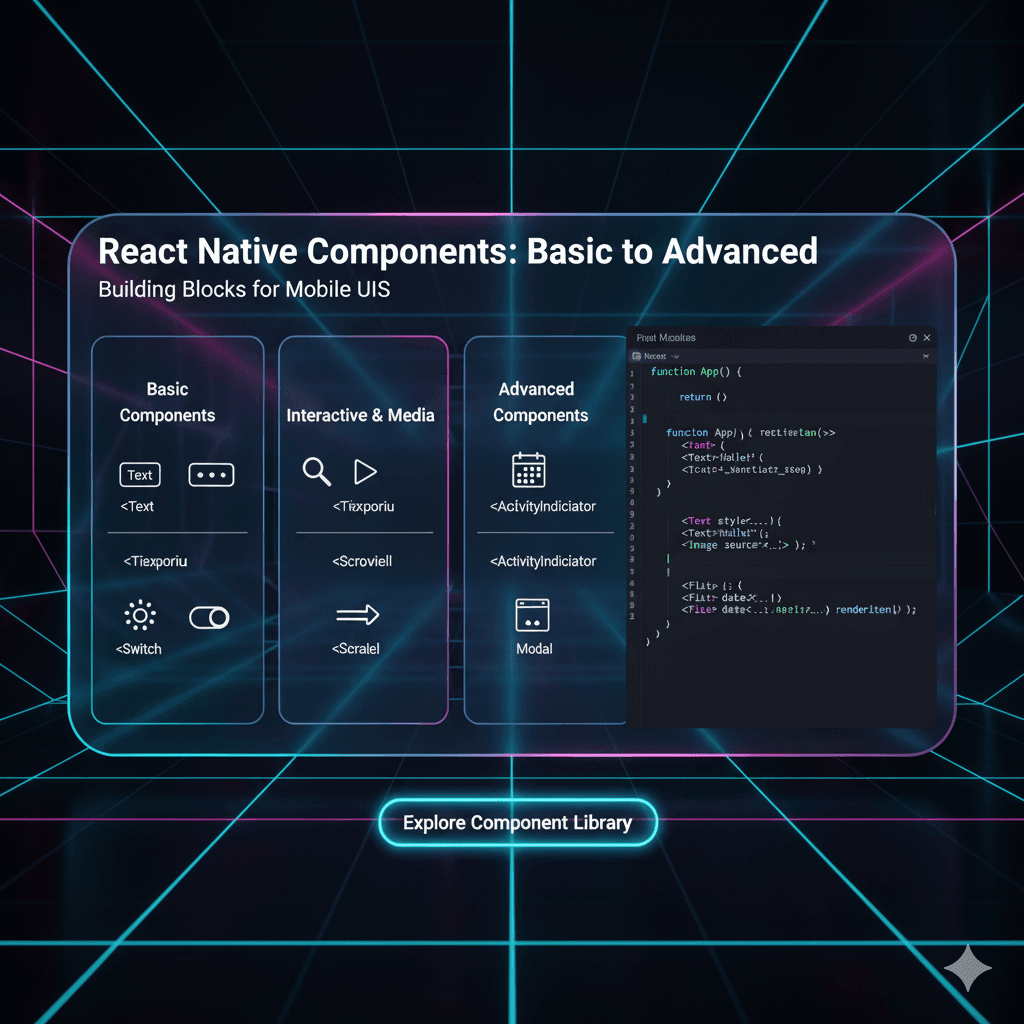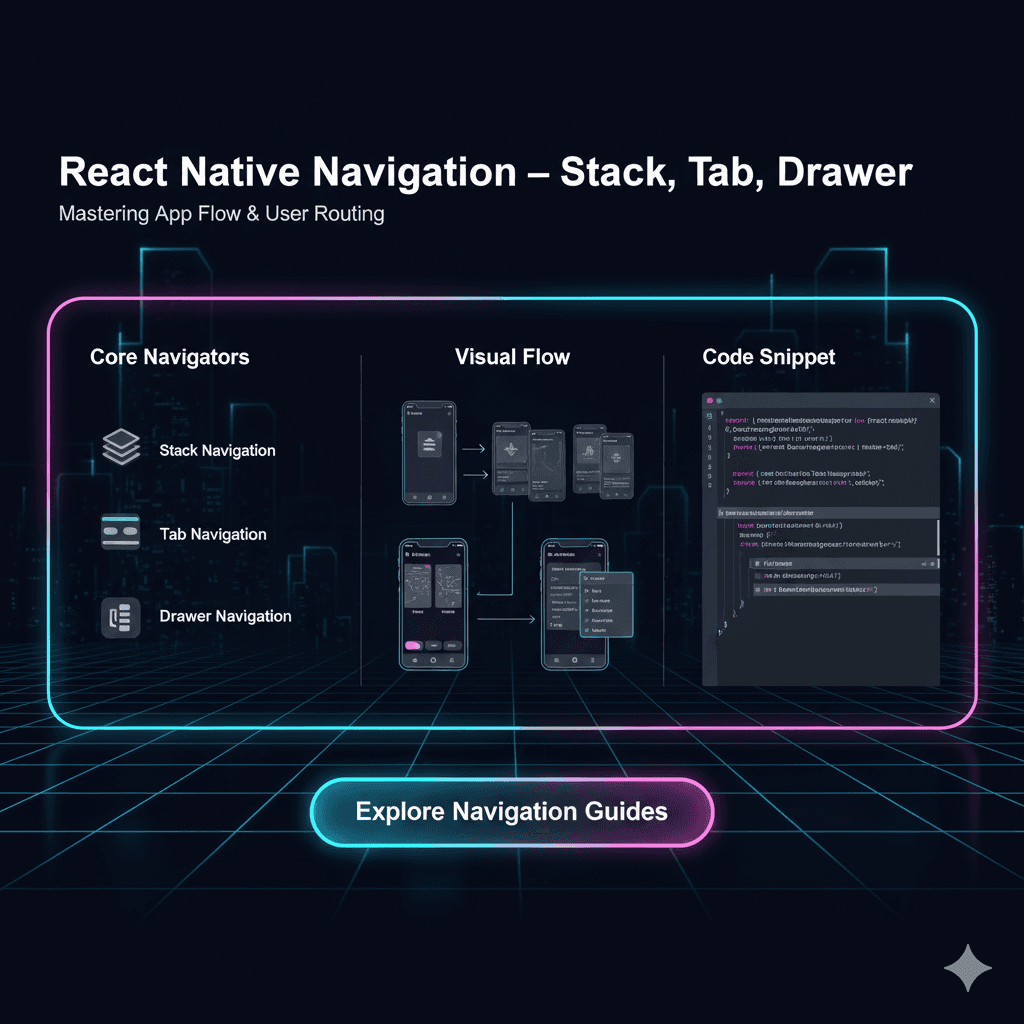Go Global: A No-BS Guide to i18n (Internationalization) for Your App
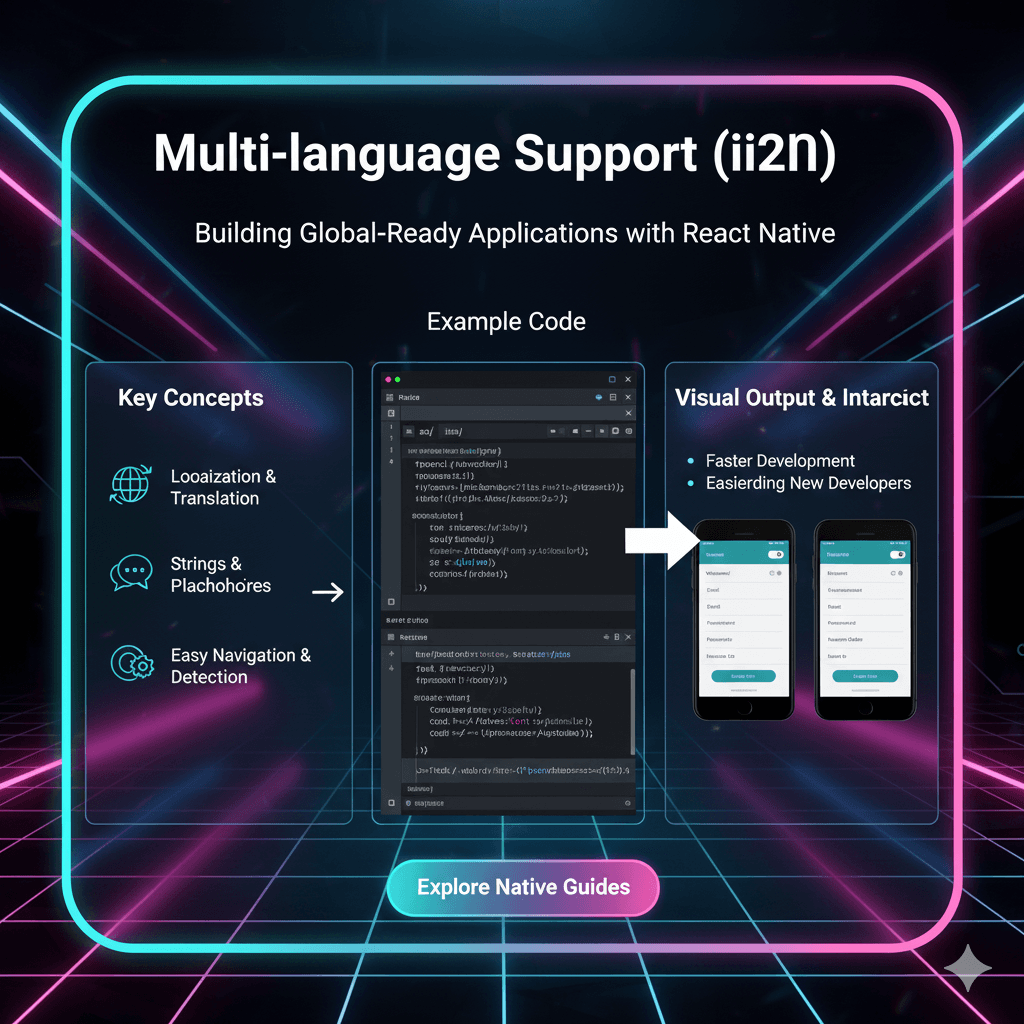
Want your app to speak every language? Our in-depth guide breaks down i18n (internationalization) and l10n (localization) with real-world examples, best practices, and the tools you need to go global. Master full-stack development with us!
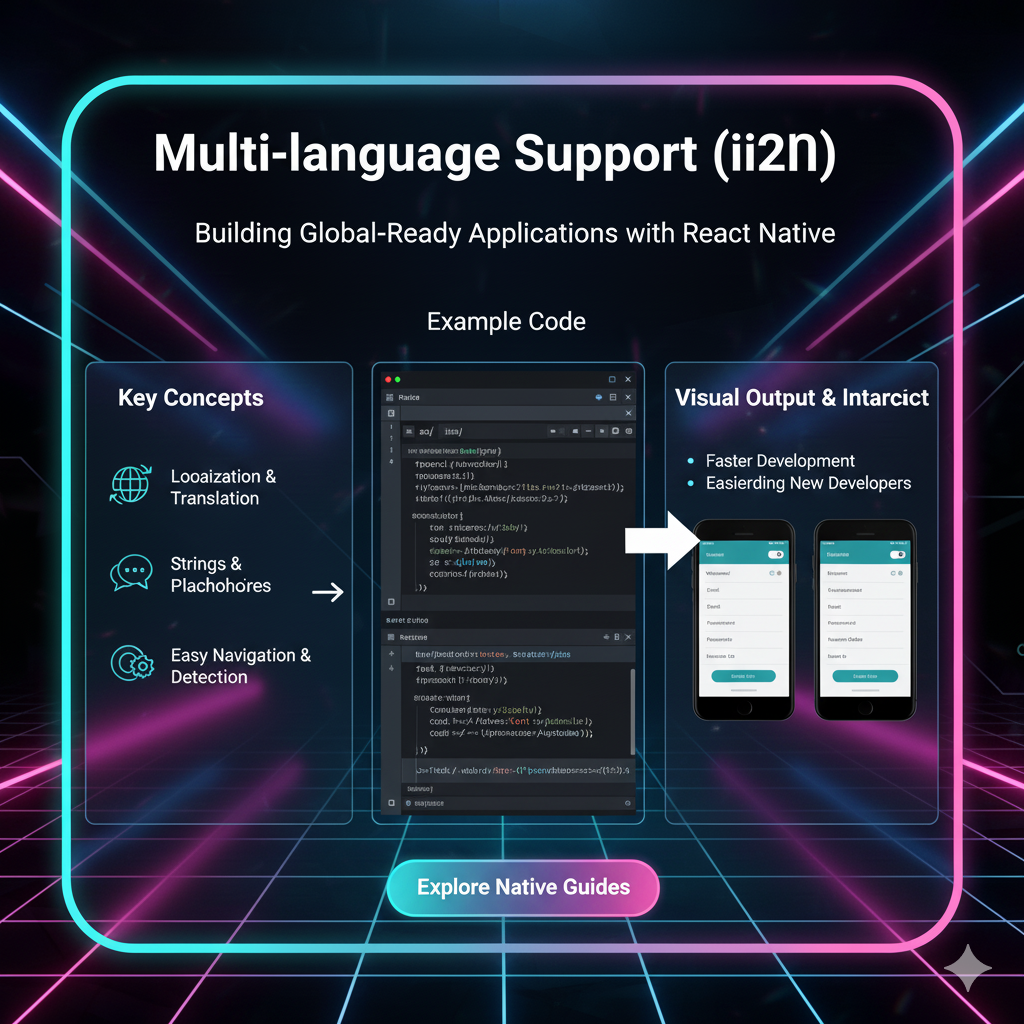
Go Global: A No-BS Guide to i18n (Internationalization) for Your App
Go Global: A No-BS Guide to i18n (Internationalization) for Your App
Ever been on a website that just gets you? It shows prices in your currency, dates in your local format, and the text is, of course, in your language. It feels seamless, right? Now, think about the opposite: you land on a cool-looking SaaS product, but it's only in English, the dates are all wrong, and you have to pull out a calculator for the prices. You'd probably bounce faster than a dropped call.
In today's hyper-connected world, building software for just one language or region is like opening a shop but locking the door for 95% of your potential customers. It doesn't make sense.
That's where the magic of i18n comes in. And no, it's not a secret government agency. It's the secret sauce behind every app that feels local, no matter where you are.
So, grab your favorite drink, and let's break down everything you need to know about making your app a true global citizen.
i18n and l10n: What's the Deal with the Numbers?
First things first, let's decode the jargon. You've probably seen i18n and l10n and wondered why they look like password hints.
i18n (Internationalization): This is the foundation. It's the process of designing and building your application so it can be adapted to various languages and regions without needing engineering changes later. Think of it as building a universal power adapter into your product. The "18" stands for the number of letters between the first 'i' and the last 'n' in "internationalization." Pretty clever, huh?
l10n (Localization): This is the next step. Once your app is internationalized (i18n), you localize (l10n) it for a specific region. This is where you translate the text, adapt the visuals, and format everything for the target culture. Using our analogy, l10n is the actual plug you attach to that universal adapter for, say, Germany or Japan.
The TL;DR: i18n is the "how," l10n is the "what" and "for whom." You can't have proper l10n without doing the i18n groundwork first.
Why Should You Even Care? The Business Case is Clear.
This isn't just a "nice-to-have" feature for tech giants. It's a strategic move.
Massive Market Expansion: Over 60% of global online content is in English, but only about 25% of internet users speak it. You're literally tapping into billions of potential new users.
User Trust and Credibility: An app that speaks my language and respects my format feels more professional and trustworthy. It shows you care about my experience.
Competitive Edge: If your competitors are monolingual and you're not, you've already won the first battle for a huge segment of users.
Higher Engagement & Conversion: Users are more likely to buy, sign up, or engage with content that's in their native tongue. It removes a major barrier to entry.
Building for the world isn't just an engineering task; it's a growth hack. To learn professional software development courses such as Python Programming, Full Stack Development, and MERN Stack that cover crucial concepts like i18n, visit and enroll today at codercrafter.in.
Okay, I'm Sold. What Do I Actually Need to Handle?
Internationalization isn't just about swapping words. It's about rethinking your entire front-end and back-end to be culturally agnostic. Here are the key pillars:
1. Text Translation (The Obvious One)
This is more than just "Hello" -> "Hola".
Plurals: English has "apple" and "apples". But in Russian, the word for apple changes based on whether you have 1, 2, 3, 4, or 5+! Your system needs to handle these complex pluralization rules.
Gender: Some languages assign gender to nouns, and the surrounding text changes accordingly.
Context: The word "File" could be a noun (a document) or a verb (to submit). You need a system that can distinguish context for accurate translation.
2. Date, Time, and Number Formatting (The Sneaky One)
This is where many apps fail.
Dates: In the US, it's MM/DD/YYYY (04/28/2024). In much of Europe, it's DD/MM/YYYY (28/04/2024). In China, it's YYYY年MM月DD日 (2024年04月28日).
Time: 12-hour vs. 24-hour clock. Don't forget time zones!
Numbers: 1,000.50 (US) vs. 1.000,50 (Germany) vs. 1 000,50 (France). The decimal and thousand separators flip.
3. Currency and Payment Methods
Showing $100 to a European user isn't helpful. You need to convert to € and display it in their local format. Also, think about payment gateways—while PayPal is global, methods like iDEAL are huge in the Netherlands, and Alipay is essential for China.
4. Layout and UI (The "Uh-Oh" Moment)
Translated text is almost never the same length as the original. German words are famously long. Chinese characters are compact. Your UI must be flexible enough to not break when text expands or contracts by 30-40%.
5. Cultural Sensitivity (The Subtle Art)
Colors, images, and symbols can have very different meanings. A thumbs-up is positive in the West but can be offensive in parts of the Middle East. Using the right imagery is part of localization.
Real-World Use Cases: Seeing i18n in Action
E-commerce (Amazon, Shopify): This is the ultimate example. They handle translated product descriptions, localized prices and currencies, adapted date formats for delivery estimates, and region-specific payment methods.
Social Media (Twitter, Instagram): The entire UI is translated. They also localize trending topics and news feeds based on your location.
SaaS Products (Notion, Slack): To be adopted by global teams, these tools must offer a seamless experience in every team member's language, from the menus to the help docs.
Gaming (Fortnite, Minecraft): Games are a global phenomenon. i18n/l10n includes translating in-game text, dubbing voices, and sometimes even altering content to meet regional cultural and legal standards.
Getting Your Hands Dirty: A Peek at the Code
Let's look at some practical examples. The core idea is to externalize all your strings. No more hard-coding text in your code.
Concept: The Translation File
You create a separate file (often JSON or .properties) for each language.
en.json (English)
json
{
"welcome_message": "Hello, {name}!",
"cart_count": "You have {count} item in your cart. | You have {count} items in your cart.",
"date_label": "Today is {date}"
}es.json (Spanish)
json
{
"welcome_message": "¡Hola, {name}!",
"cart_count": "Tienes {count} artículo en tu carrito. | Tienes {count} artículos en tu carrito.",
"date_label": "Hoy es {date}"
}Front-End Example (React with i18next library)
javascript
import { useTranslation } from 'react-i18next';
function MyComponent() {
const { t, i18n } = useTranslation();
const changeLanguage = (lng) => {
i18n.changeLanguage(lng); // Changes language on the fly
};
return (
<div>
<h1>{t('welcome_message', { name: 'Ana' })}</h1>
<p>{t('cart_count', { count: 1 })}</p>
{/* Will show: "You have 1 item in your cart." */}
<p>{t('date_label', { date: new Date().toLocaleDateString(i18n.language) })}</p>
<button onClick={() => changeLanguage('en')}>English</button>
<button onClick={() => changeLanguage('es')}>Español</button>
</div>
);
}See how the cart_count key handles plurals automatically? That's the power of good i18n libraries.
Back-End Example (Python with Flask and Babel)
python
from flask import Flask, request
from flask_babel import Babel, _, format_date
from datetime import datetime
app = Flask(__name__)
babel = Babel(app)
@babel.localeselector
def get_locale():
# Logic to get user's preferred language (e.g., from browser, user settings)
return request.accept_languages.best_match(['en', 'es', 'de'])
@app.route('/')
def home():
user_name = "Ana"
today = datetime.now()
# Using gettext with placeholders and date formatting
welcome_msg = _('Hello, %(name)s!', name=user_name)
date_msg = _('Today is %(date)s', date=format_date(today))
return f"<h1>{welcome_msg}</h1><p>{date_msg}</p>"Implementing this robustly requires a strong foundation in back-end logic. If you're looking to master these skills, our Python Programming and Full Stack Development courses at codercrafter.in dive deep into building scalable, internationalized applications.
Best Practices You Can't Ignore
Plan for i18n from Day 0: Retrofitting i18n into a massive, hard-coded codebase is a nightmare. Build with the world in mind from the start.
Use Established Libraries: Don't roll your own. Use mature libraries like
i18next(JavaScript),react-intl(React),Fluent(Mozilla), orgettext(Python/Django). They handle the complex edge cases for you.Work with Professional Translators: Google Translate is a starting point, but it's often clunky and inaccurate for UI copy. For a professional product, human translators are key.
Test, Test, Test: Use pseudo-localization—a technique where you replace English text with longer, accented versions (e.g., "Hello" becomes "[Ĥéļļö]") to quickly find UI breakages and untranslated strings.
Store User Preferences: Once a user selects a language, save it in their profile or browser so they don't have to set it every time.
FAQs: Your Quick Fire Round
Q: What's the difference between i18n and l10n?
A: i18n is the engineering (making the app ready). l10n is the cultural adaptation (translating and customizing for a specific locale).
Q: How many languages should I support at launch?
A: Start with 2-3 of your biggest target markets. Don't try to boil the ocean. English + Spanish + one other key language is a great start.
Q: Is it only about the language?
A: Absolutely not! Language is the biggest part, but don't forget dates, times, numbers, currencies, and cultural adaptation of images and colors.
Q: How do I handle right-to-left (RTL) languages like Arabic?
A: This is an advanced part of i18n. CSS frameworks like Bootstrap have good RTL support. You'll need to dynamically change your CSS or have separate stylesheets for RTL layouts.
Q: This seems complex. Where can I learn to build this properly?
A: We've got you covered. For a structured, project-based approach to learning these full-stack skills, check out our MERN Stack and Full Stack Development courses at codercrafter.in. We turn complex topics into manageable, learnable modules.
Conclusion: Your App's Passport to the World
Internationalization isn't a feature; it's a mindset. It's about building software with empathy and foresight, understanding that a great user experience transcends borders and languages. By investing in i18n, you're not just translating words—you're building bridges to millions of new users, building trust, and future-proofing your product for a global stage.
The technical concepts might seem daunting at first, but with the right approach and tools, it becomes a natural part of your development workflow. Start small, plan ahead, and watch your user base grow exponentially.
Ready to build the next global app sensation? The first step is mastering the craft. To learn professional software development courses such as Python Programming, Full Stack Development, and MERN Stack, visit and enroll today at codercrafter.in. Let's build something the whole world can use.
